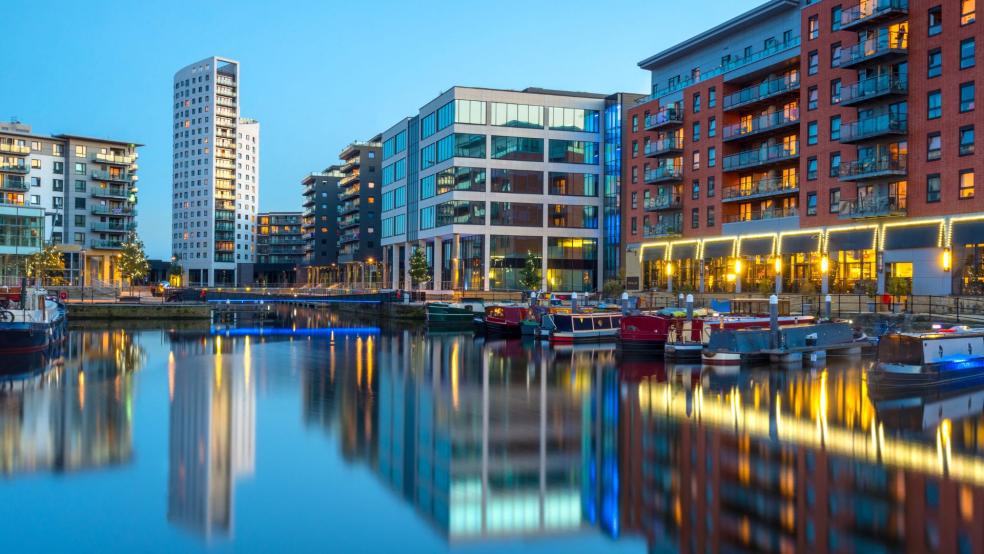
The increasing demand for ‘beauty’ in design and how this very subjective term can realistically be applied in planning by Nigel Booen, Director of Design, Boyer
The revised NPPF states that 'beauty' will now be, ‘Part of the social objectives of the planning system as a whole’; ‘One of the key objectives for large new housing schemes’, and ‘Fundamental to what the planning and development process should achieve’.
But what is 'beauty' in the context of planning, who should determine what is beautiful, and how?
The issue came to the fore in April when Michael Gove called in and subsequently refused planning permission for a 165 home development by Berkeley Homes in Cranbrook, Kent. The decision was based on Gove’s view that the design was too ‘generic’. Consequently Berkeley is taking Michael Gove to court on the basis that his decision, which involved overruling planning inspectors, was ‘irrational’.
In another instance, AC Lloyd Homes was told in May that its reserved matters application for 200 homes on land outside Whitnash, near Leamington Spa, was being called in on the basis of design, and consequently has withdrawn its application.
Both cases attracted considerable criticism by the development industry, specifically because they follow the controversy of Gove scrapping mandatory local housing targets, at the behest of backbenchers. Unsurprisingly given the timing, critics claim that much needed homes were being sacrificed for political expediency.
But what does the addition of the word 'beauty' add? It is immediately problematic because of absence of clarity over what 'beauty' actually is. The emphasis on design as a determining factor is the result of the 2020 publication Living with Beauty. But despite using the word 'beauty' 336 times and ‘beautiful’ 63 times, the report doesn’t define what is meant by either.
On its most basic level, I would suggest that 'beauty' means ‘well designed’. But the NPPF also changes the requirement for new developments to be ‘well designed’, to being ‘well designed and beautiful’ – so 'beauty' must mean something more.
It may be understood that ‘well designed’ relates more to function – internal layout and positioning within the wide development – while 'beauty' is more about the aesthetic. But as an architect, I believe aesthetics to be central to good design. So the problem remains.
Another concern is that planning decisions could be predicated on Michael Gove’s view of 'beauty', or that of any successor. I would question whether Gove is a better arbiter of taste than the developer, architect, local authority or planning inspector. Furthermore, not only is the understanding of beauty highly subjective, but it is contextual.
The failure to define beauty opens up the potential wide-spread refusal of new developments on this very subjective basis. It risks planning decisions being misguided, unexamined and open to subconscious prejudice; whereas planning should be the opposite: informed, scrutinised and objective.
Beauty, because it of its undefined and unqualifiable nature, risks becoming the greatest single threat to the planning system: a weapon for any planning committee which wishes to oppose a planning application on NIMBY, or other grounds.
The reason why the Berkeley case has shocked the industry is that planning decisions are otherwise made by professionals with specific expertise, understanding and impartiality. Even within the Planning Inspectorate itself, decision-makers are chosen for their specific areas of practice which gives those on the receiving end of decisions some reassurance that the decision was logical and justifiable. It is hard to see Gove’s decision on the Kent scheme as either.
So we now have 'beauty' embedded in planning policy, in name at least; through design codes, we have the structure to deliver beauty, and through case law, we have the threat that any new developments not judged ‘beautiful’ may be refused. This will undoubtedly focus minds on (varying definitions of) beauty from masterplanning through to decision-making and appeals, but with considerable precariousness. It this provides ammunition for planning committees to refuse schemes on similar grounds. Without anyone knowing what the benchmark is, design could be an easy target to justify refusal.
In practice the word 'beauty' makes the whole process of designing new developments more fraught with uncertainty. And uncertainty is the last thing we need at the moment, with so many other uncertainties with the planning system. This decision fails to give any indication of what is acceptable; all we know is what was not considered acceptable. But we don’t know why.
Beauty matters, but in planning, certainty matters even more, because without certainty, planning frequently comes to a halt. Our planning system is built on guidance, codes, policies and legislation. There is no place for subjectivity and personal interpretation.









